
We know that a clear brand positioning strategy is critical to differentiate your business in the mind’s of your customers. And while your positioning should highlight what makes your brand great, it’s also a valuable tool to identify dangerous points of competitive overlap.
To check on the clarity of your brand’s position and see if you suffer from excessive overlap, you can start by asking:
- In what ways does our offering stand out within the competitive landscape?
- Can our customers easily remember what makes our offering valuable to keep it top of mind?
- Are we differentiated enough to make switching to our offering an obvious choice?
With those questions in mind, you can see why your positioning is so critical. Your position isn’t some fluffy strategic marketing statement — it’s a reflection of who you are as a business and how you measure up in the competitive landscape.
When we work on defining the position of a brand we like to find ways to quantify the value that’s provided to customers. Taking the time to do that makes it much easier to compare, contract, and discuss differences between yourself and competitors.
Your brand may provide value in all sorts of ways. It may satisfy customer needs in ways ranging from functional, to emotional, to aspirational. With all those variables in play, it’s almost impossible to hold all those factors in your head and see how they work together to inform your position.
And again, the positioning process isn’t simply a matter of understanding your brand’s strengths and weaknesses. You also need to understand how your competitors fit into the mix. Your position reveals both opportunities and traps.
To see how we can uncover these types of traps we’ll look at a brand that faced major positioning obstacles, the mobile stream platform, Quibi.
Quibi: An Exercise In Positioning Challenges

Quibi took a giant swing in the streaming space raising $1.75 billion dollars to create original content and launch a brand new platform.
Their positioning formula consisted of:
- Highly produced content (i.e. up to $100K / minute on original content)
- Segmenting content into short-form, digestible chunks
- Making content designed specifically for viewing on your mobile phone.
These quick-bites, were meant to provide the perfect dose of entertainment any time when you had a few minutes to fill.
Unfortunately, what they’re now best known for is creating a billion dollar platform that launched and shut down within the span of 6 months.
There’s plenty that could be said (and has already been said) about the challenges Quibi faced. Whatever your take is on their situation, there’s no doubt the company was conceived and developed by talented, successful, and experienced individuals both in business and entertainment.
And that’s what makes this example so potent. It shows how having knowledge, skill, and ample resources doesn’t guarantee protection against positioning problems.
We can use Quibi’s experience to show how important your brand’s positioning is, how tricky it can be to conceptualize it without a strong framework, and how you can use positioning to visualize potential traps for your own brand.
Quibi’s Brand Positioning Baseline
To help us get specific about the areas where Quibi looked to stake their claim, we’ll start off by mapping Quibi’s position using the Elements of Value.
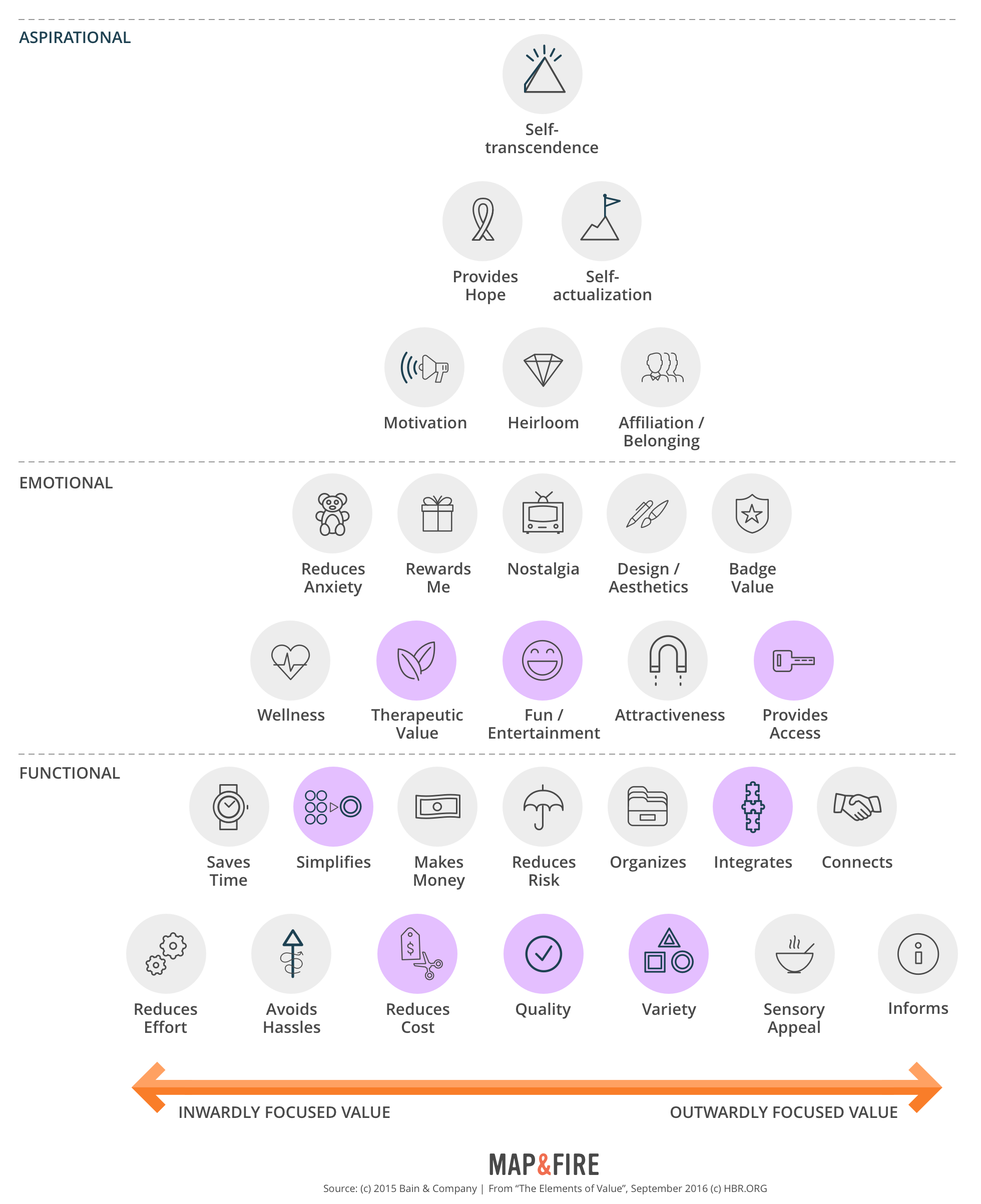
The elements most relevant to a customer who’s seeking distraction and escape via streaming content include:
- Quality: Production value of the content and the experience accessing it
- Variety: Diversity of the types of content that’s provided
- Reduces Cost: How affordable the service is
- Simplifies: The ease of consuming the content
- Integrates: Fit of the content and service within a customer’s current life
- Provides Access: Ability to get content that’s desirable and isn’t available elsewhere
- Fun / Entertainment: Enjoyment received from the content
- Therapeutic Value: The sense of calm, distraction, or escape that’s provided
Based on their service and marketing strategy, here’s an approximate value curve of how Quibi delivered on those elements.
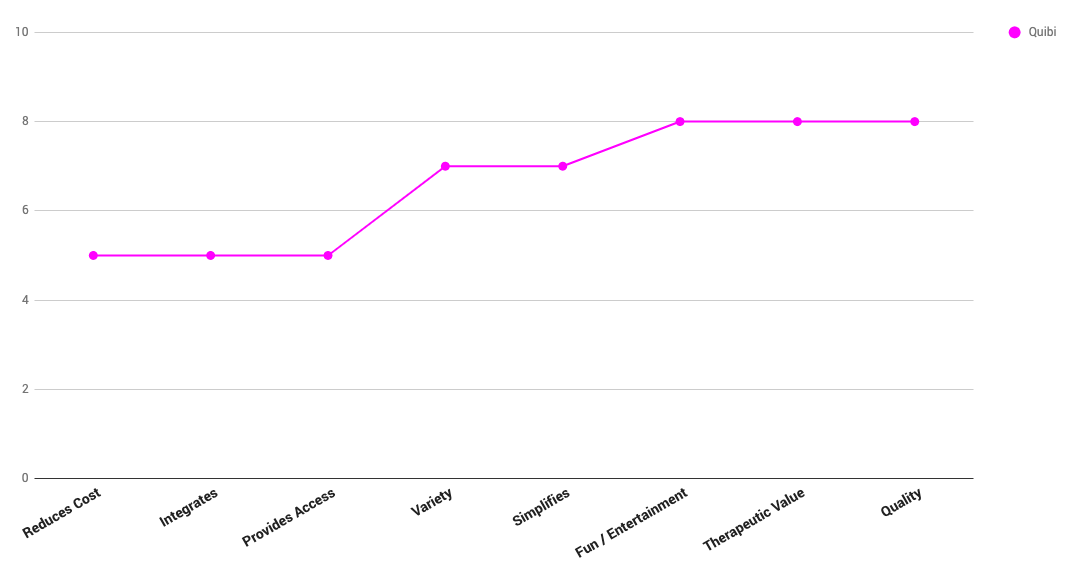
A key part of a strong position is the focus of elements where your brand delivers at a high level.
For Quibi, the crux of their position centered on:
- Quality: In their own words, “Movie-quality shows”.
- Simplifies: Developing shows in short-form segments, meant to make it easier to consume the content within little gaps of time.
- Integrates: An exclusive focus on mobile device viewing, which meant fewer integration options for how customers consume the content.
- Fun / Entertainment / Therapeutic Value: The entire service was built to entertain customers and provide short escapes from normal life.
On its own, this sounds like a strong thesis for a new service. But again your position doesn’t exist in a vacuum. It’s about how your brand contrasts with all the other options your customers might consider to satisfy their needs.
Let’s look at how Quibi measured up as we contrast their service against other popular offerings.
Layering In Quibi’s Direct Competition (Like Netflix)
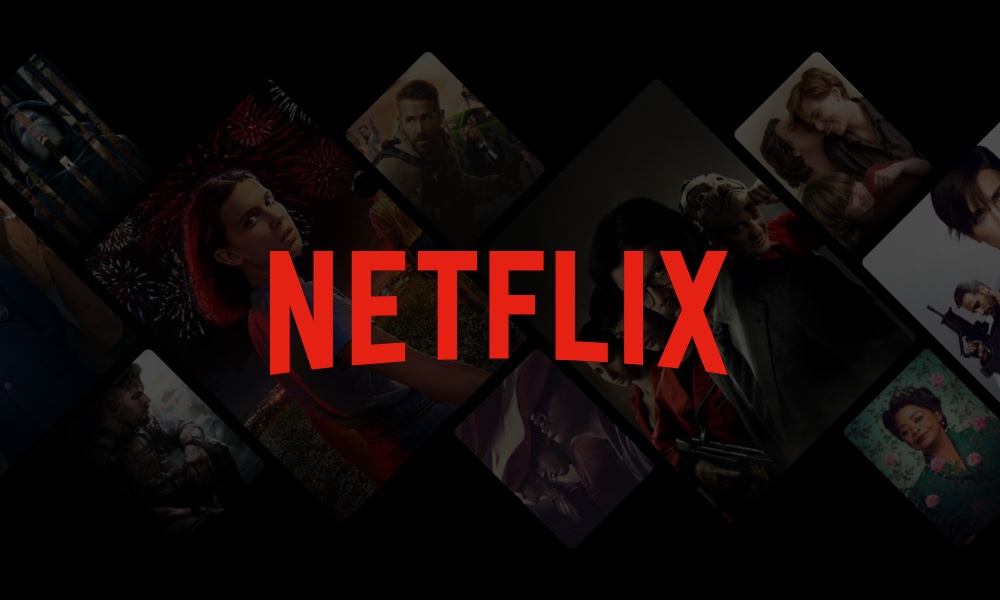
In the realm of highly produced, streaming content, there’s no question that Netflix is king. With over 70 Million subscribers in the US and nearly 170 Million worldwide, they’re at the top of the list for consumers looking to satisfy their streaming content fix.
Let’s layer in a value curve for Netflix to see how it compares to Quibi.
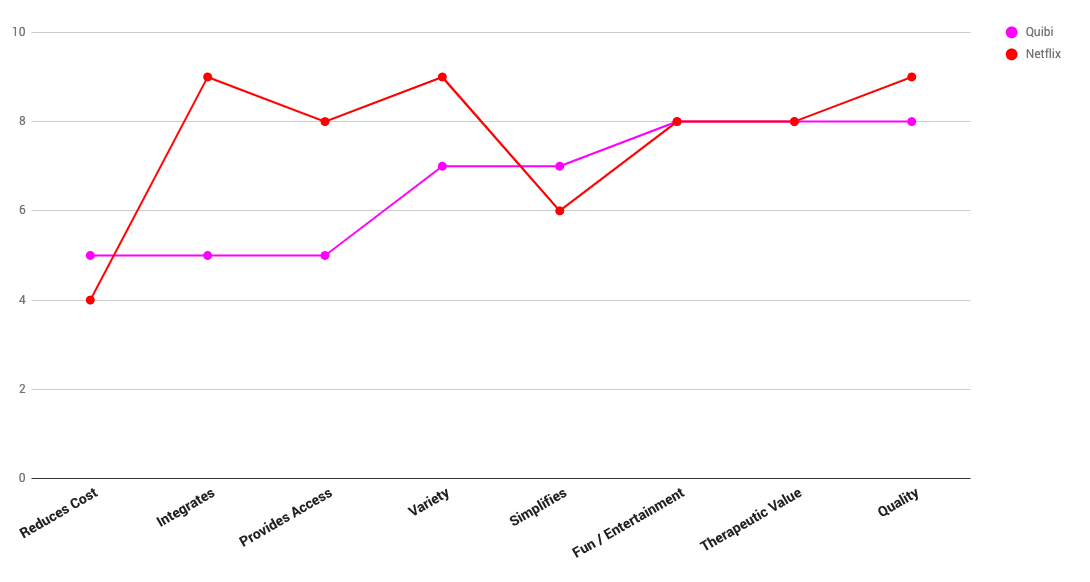
Immediately we see some key points of separation and advantage for Netflix:
- Integrates: Netflix is available on any device in any situation, from your phone, to computer, to TV.
- Provides Access: While their catalog shifts frequently, their service has a strong mix of current movies and shows, classic favorites, and original content with big name stars.
- Variety: Netflix has invested incredible amounts of money in securing rights and developing content including $17 Billion in 2020. There really is something for everybody.
What’s also very important here is how Quibi’s strengths stand up against Netflix:
- Quality: Quibi’s quality may be excellent, but Netflix’s original and licensed content are already world-class.
- Simplifies: There may be a slight advantage here for Quibi to pre-cut content into short snippets. But the beauty of on-demand, streaming content is that you can pause it and pick it back up any time. This limits the value in pre-determining breaks for viewing content in this space.
- Fun / Entertainment / Therapeutic Value: At best, we have to consider these as “table stakes” elements — i.e. they’re necessary to get in the game, but they don’t serve as points of differentiation.
Quibi’s only other slight advantage here was a lower price point.
But with all of Netflix’s other advantages, cost savings didn’t move the needle for Quibi head-to-head. And Quibi’s price of $4.99-$7.99/month landed them right in the muddy middle of streaming services with other recent additions like Disney+ and Apple TV+.
And Then The Indirect Competitors (Like TikTok)
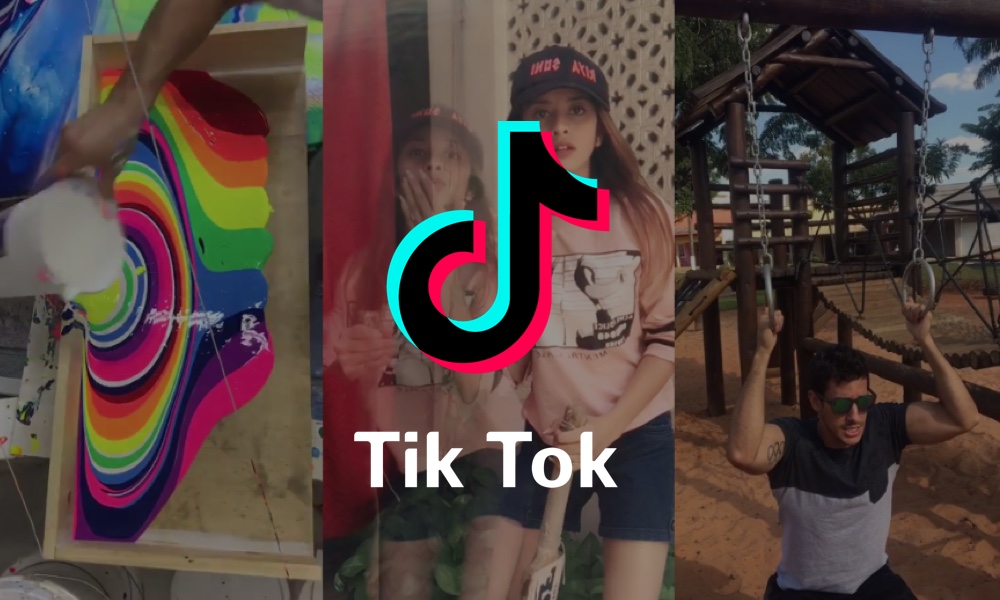
To add to Quibi’s challenges, they weren’t just battling against other high production value streaming services. Today’s content space requires battling all kinds of options for viewer attention.
Whether Quibi wanted to be compared against user generated content services like TikTok, YouTube, and Instagram or not, doesn’t matter. The reality is that consumers want to fulfill a job in their life — in this case to enjoy some entertainment and escape from normal life — and they’ll satisfy it in any number of ways.
From that perspective it means we have to contrast Quibi with those types of services, too.
With its incredible growth this year (over a billion users and the most downloaded app in Q1) TikTok serves as a solid representative for this type of content.
Let’s see how our strategy canvas looks once we add TikTok’s value curve into the mix: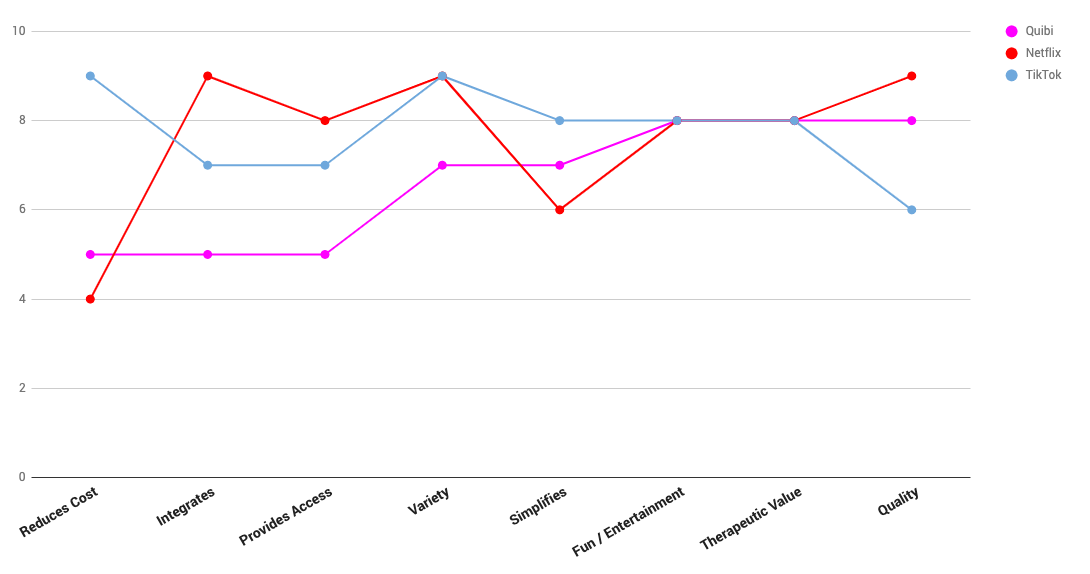
Here we can see a couple of TikTok’s key differentiators:
- Reduces Cost: As a free to download, ad-driven platform it’s perfect for casual use from young people with limited to no budget.
- Variety: With millions of creators contributing content from around the world, there’s always something different and new to watch.
- Simplifies: While Quibi tried to manufacture content that was easy to consume in snippets, TikTok was already built around this premise organically.
- Fun / Entertainment, Therapeutic Value: Again, depending on your mood and taste, TikTok addresses these “table stakes” needs in a different but arguably equal way.
Quibi has a clear advantage over TikTok in terms of quality of content, but based on customer engagement, in particular via small, mobile screens, it would seem this isn’t a critical point of difference for this customer segment.
When you look at all these advantages compiled together, it’s easy to see how a young person with a small slot of time to fill would choose TikTok over Quibi.
Quibi’s Big Positioning Trap

The issue with Quibi’s position wasn’t in their ability to deliver some points of value at a high level, it’s that it didn’t deliver enough on significant points of difference.
The areas where Quibi wanted to hang its hat were either:
- Better satisfied by other offerings (e.g. Simplifies, Integrates)
- Equally satisfied by other offerings (e.g. Fun / Entertainment, Quality)
This meant that Quibi missed out on that critical combination of focus and separation. Without that, it was very hard to get customers to understand and remember why they should switch to Quibi to satisfy their entertainment needs.
Even nearly two billion dollars of resources wasn’t enough to overcome those fundamental positioning challenges.
Finding Your Brand’s Positioning Challenges And Opportunities

The takeaway is that while developing and refining your brand’s position requires some work, it’s critical for understanding how to connect with your customers.
As you think about your positioning, here are some key questions to consider:
- What group of elements are you best equipped to satisfy at a high level?
- Where can you create the largest points of separation between what you offer and what your competitors offer?
- Do you have alignment between what you do best (focus) and where you can create separation (divergence)?
- How else might your customers satisfy the needs you address? How do those options compare to what you provide? Are you looking closely at competitors outside your immediate category?
It’s not enough to understand those points on a gut level, you need to get specific and map them out. That’s the only way to make sure you’re looking at the problem cohesively and that everyone on your team sees your positioning in the same way.
Once you’ve crystalized your insights the next step is to refine things based on what your customers say and how they behave. At the end of the day, it’s the perception of your customers that will decide if your positioning is on point or not.
With some careful analysis and utilizing tools like the Elements of Value and value curves you’ll build stronger connections with customers and avoid dangerous positioning overlaps that could stop your brand’s growth in its tracks.

Get Help Developing A Strong Brand Position
If you’re ready to build stronger connections with your customers, reach out for a free consultation. We’ll help you transform your best business thinking into an actionable, shareable, growth-oriented guide. Click below to learn more about the Brand Guidebook process.

